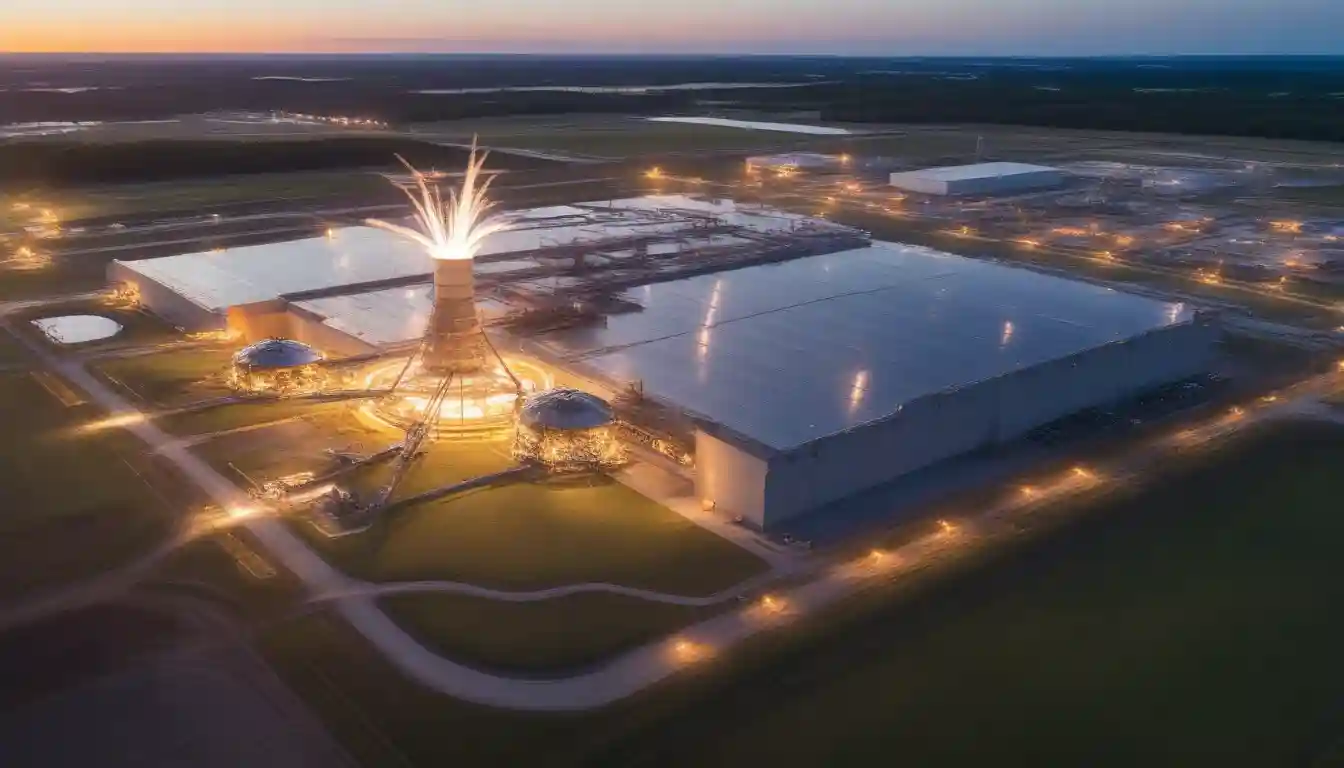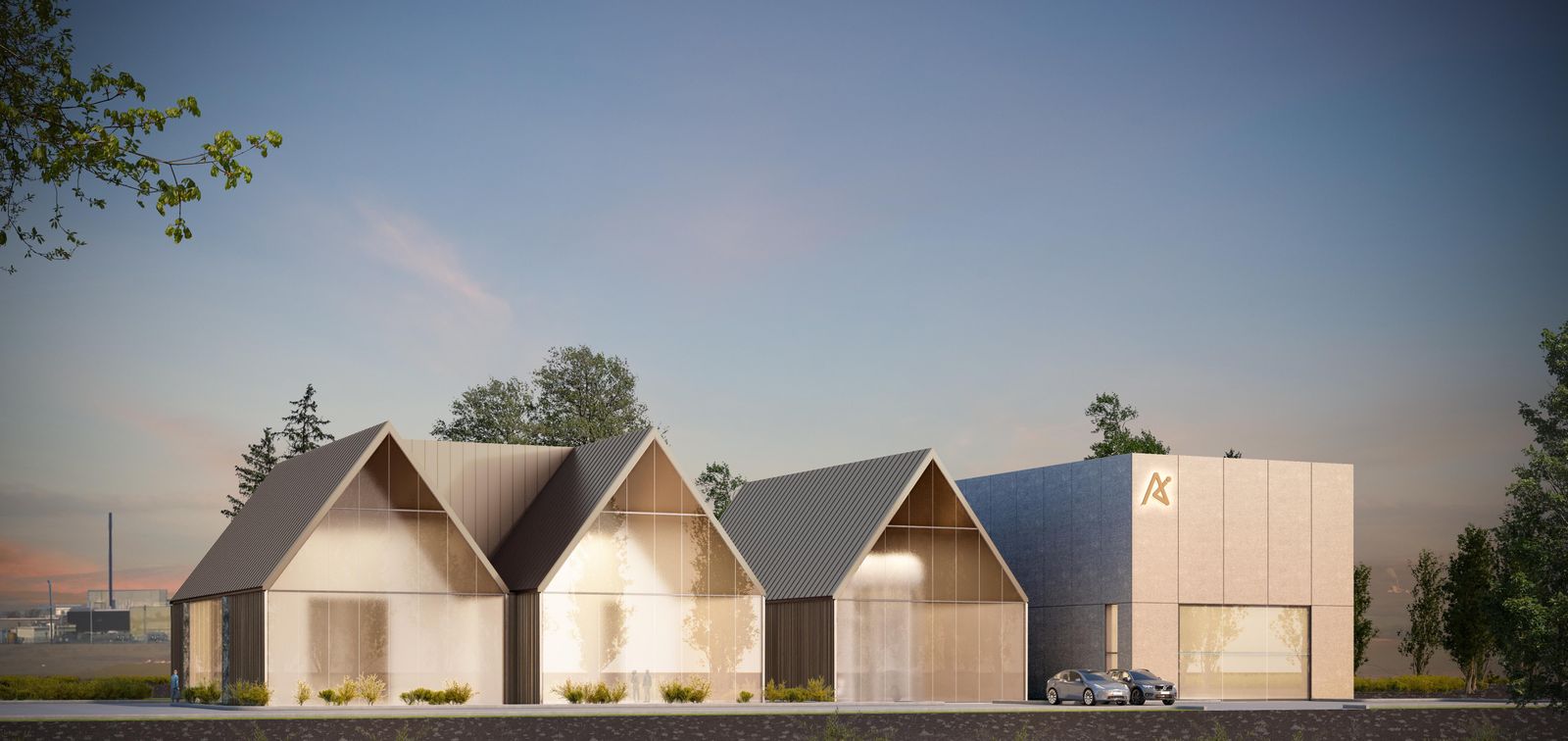
Aalo Atomics raises 100 million to build modular nuclear plant aiming to power data centers and AI growth by 2026
Aalo Atomics’ $100M Bet: Can Modular Nuclear Power the AI Revolution?
AUSTIN, Texas — On August 19, 2025, Aalo announced a $100 million Series B funding round, led by Valor Equity Partners, to build the Aalo-X, a first-of-its-kind nuclear power plant designed to energize an experimental data center by next summer. If successful, it could mark the first advanced nuclear plant to go live in the U.S. in decades, a milestone that promises to reshape energy markets and fuel the AI-driven future.
The stakes are high. Data centers, the backbone of AI and cloud computing, are projected to nearly double their electricity consumption to 945 terawatt-hours by 2030, according to the International Energy Agency. As hyperscalers like Google and Amazon scramble for reliable, low-carbon power, Aalo’s vision of factory-built, modular nuclear reactors—co-located with data centers—offers a tantalizing solution. But with regulatory hurdles, technical risks, and fierce competition from rivals like Kairos Power and Oklo, Aalo’s sprint toward “zero-power criticality” by July 2026 is a high-wire act that could either ignite a new era of nuclear energy or falter under the weight of its own ambition.

A New Nuclear Dawn: The Aalo-X Vision
Aalo’s plan is as audacious as it is precise. The Aalo-X, a 10-megawatt sodium-cooled reactor, is the cornerstone of what the company calls an “Aalo Pod”—a cluster of five reactors paired with a single turbine to deliver 50 megawatts of electricity. Unlike traditional gigawatt-scale nuclear plants, these pods are designed to be mass-manufactured in Aalo’s Austin facility, trucked to sites, and deployed with minimal land and water use. The company’s first target: an experimental data center to be built alongside the Aalo-X at Idaho National Laboratory, a proof-of-concept that could validate nuclear power as the ideal partner for AI’s insatiable energy demands.
“The integration of nuclear and data centers is a game-changer,” said one energy analyst familiar with Aalo’s plans. “It bypasses grid bottlenecks and delivers clean, firm power exactly where it’s needed.” The approach aligns with a broader market shift: Amazon’s recent acquisition of a nuclear-powered data center campus in Pennsylvania and Google’s power purchase agreement with Kairos Power signal that hyperscalers are betting on nuclear to meet their net-zero goals.
Aalo’s timeline is aggressive. Just 20 months after its first hires, the company has built its pilot factory and a non-nuclear prototype, leveraging a U.S. Department of Energy pilot program to fast-track the Aalo-X to criticality by mid-2026. This DOE initiative, backed by recent executive orders to streamline nuclear licensing, gives Aalo a regulatory head start, though commercial deployment will still require approval from the Nuclear Regulatory Commission (NRC).
Did you know that in a nuclear reactor, "criticality" means the reactor is perfectly balanced to sustain a steady nuclear chain reaction? When a reactor is critical, each fission event produces just enough neutrons to keep the reaction going without increasing or decreasing in intensity. This stable state is essential for the continuous production of nuclear power. If the reactor becomes supercritical, the reaction grows rapidly, while if it is subcritical, the reaction dies down. Operators use control rods to carefully manage this balance, ensuring safe and reliable energy generation.
The AI Energy Crisis: A Market Ripe for Disruption
The backdrop to Aalo’s rise is a seismic shift in global energy demand. Data centers, driven by AI workloads, are expected to grow electricity consumption by up to 165% from 2023 levels, according to Goldman Sachs. Traditional grids, strained by interconnection delays and renewable energy’s intermittency, are struggling to keep pace. Nuclear, with its high uptime and low-carbon profile, is emerging as a frontrunner to fill the gap.
Projected Global Electricity Consumption of Data Centers, AI, and Cryptocurrency by 2030
| Sector | 2024 Estimated Consumption (TWh) | 2030 Projected Consumption (TWh) | Consumption Trend | Key Notes |
|---|---|---|---|---|
| Data Centers | ~415 | ~945 | More than doubles | Driven largely by AI growth; possibly 1,200 TWh by 2035; 1.5% to 3-4% of global electricity use |
| Artificial Intelligence | Significant share within data centers (~24% servers) | Quadruples AI-specific data center electricity | Sharp growth within data centers | AI prompts use 10-100x more electricity than standard queries; projected to be ~15-40% of data center power |
| Cryptocurrency Mining | Part of 2% global electricity for crypto+data centers | Part of ~3.5% global electricity in 3 years | Rising with increasing renewables | Renewable share in Bitcoin mining 41% in 2024, possibly 70% by 2030; crypto mining ~0.7% of emissions by 2027 |
Aalo’s focus on data centers taps into a niche that’s both immediate and lucrative. “Data centers are a perfect first market because they need reliable power at a scale that modular reactors can deliver,” said one venture capital investor involved in Aalo’s funding round. The company’s broader vision extends to municipal utilities, desalination plants, and industrial heat applications, but its near-term goal is clear: prove that small modular reactors (SMRs) can power AI at a target cost of 3 cents per kilowatt-hour, a figure that would undercut many existing energy sources.
Racing Against Time: Aalo’s Edge and Risks
Aalo’s speed is its defining strength. In an industry where nuclear projects often span decades, the company’s 20-month sprint from inception to a full-scale prototype is remarkable. Its $100 million Series B, backed by a diverse syndicate including NRG Energy and Tishman Speyer, has doubled its workforce to 120 and funded its Idaho test site. A memorandum of understanding with Idaho Falls Power for a seven-reactor fleet further signals market interest, though it remains non-binding.
Yet, speed comes with trade-offs. Aalo’s choice of low-enriched uranium (LEU) dioxide fuel avoids the supply constraints of high-assay low-enriched uranium (HALEU), used by competitors like Kairos and Oklo. But sodium-cooled reactors, while efficient at heat transfer, carry risks: sodium reacts violently with water or air, requiring sophisticated engineering to prevent leaks. “The sodium-steam interface is a known challenge,” noted one nuclear engineer. “Aalo will need to prove its design is bulletproof, especially next to a data center.”
Did you know that while traditional nuclear fuel, Low-Enriched Uranium (LEU), contains up to 5% of fissile uranium-235, the emerging High-Assay Low-Enriched Uranium (HALEU) is enriched to between 5% and 20% uranium-235? This higher concentration allows HALEU to power advanced and smaller reactors more efficiently, enabling longer fuel cycles and improved performance, but it also requires more specialized infrastructure for production and handling compared to conventional LEU fuel. HALEU represents a key innovation for the future of nuclear energy.
Regulatory risks loom even larger. While the DOE’s pilot program allows Aalo to bypass initial NRC licensing for the Aalo-X, commercial deployment will require a full construction and operating license—a process that has tripped up even well-funded rivals. The collapse of NuScale’s SMR project, which saw costs balloon beyond $80 per megawatt-hour, serves as a stark warning. Aalo’s ambitious 3-cent-per-kilowatt-hour target hinges on achieving economies of scale through mass manufacturing, but first-of-a-kind projects rarely deliver on cost projections.
The Competitive Arena: A Crowded Field of Innovators
Aalo is not alone in chasing the nuclear-for-AI prize. Kairos Power, with NRC-approved construction permits for its 50-megawatt Hermes-2 reactor and a power purchase agreement with Google via the Tennessee Valley Authority, is a frontrunner. Oklo, publicly traded and backed by DOE support, is targeting commercialization by 2027. Radiant Nuclear, with a Pentagon contract for portable 1-megawatt reactors, and global players like France’s newcleo and Denmark’s Saltfoss are also advancing fast.
“Aalo’s advantage is its focus on modularity and speed,” said one industry observer. “But Kairos and Oklo have deeper regulatory traction and customer commitments.” Kairos’s Google deal, for instance, locks in a 500-megawatt pathway by 2030, while Aalo’s experimental data center remains a concept. To compete, Aalo must secure a binding power purchase agreement with a hyperscaler—a critical proof point that could elevate it from promising to bankable.
Voices from the Ground: Balancing Hope and Caution
For communities like Idaho Falls, Aalo’s project offers economic promise. “Aalo’s investment could bring jobs and innovation to the region,” said a local official involved in the Idaho Falls Power discussions. But residents near potential sites express unease about safety and waste management, concerns amplified by sodium’s reactivity and the untested nature of Aalo’s design.
Investors, too, are cautiously optimistic. “Aalo’s factory-first approach is compelling, but execution is everything,” said one venture capitalist. “They need to show not just criticality, but a clear path to commercial viability.” The company’s ability to navigate the NRC, secure fuel supplies, and deliver on cost promises will determine whether its $100 million war chest translates into market leadership.
Investment Outlook: A High-Risk, High-Reward Play
For investors eyeing Aalo, the opportunity is tantalizing but fraught. The company’s modular design and LEU fuel choice position it to capitalize on the AI-driven energy surge, particularly for data centers seeking to bypass grid delays. Analysts suggest Aalo’s focus on small, scalable reactors could yield early wins in niche markets, with potential to expand into utilities and industrial applications. Historical patterns in nuclear innovation—marked by high initial costs but steep learning curves—support the case for long-term upside if Aalo achieves series production.
However, risks abound. Regulatory delays, technical missteps, or failure to secure a marquee customer could stall progress. Past nuclear ventures, like NuScale, underscore the challenge of hitting cost targets in first deployments. Investors should diligence Aalo’s fuel strategy, sodium safety protocols, and NRC timeline, potentially structuring investments with milestones tied to licensing and customer contracts. Past performance is no guarantee of future results, and investors should consult financial advisors for personalized guidance.
The Road Ahead: Proving the Nuclear Promise
Aalo Atomics stands at a pivotal moment. Its $100 million raise and DOE-backed pilot position it as a contender in the race to power AI’s future. By next summer, the Aalo-X’s criticality test could cement its place as a pioneer—or expose the limits of its ambitious timeline. For now, Aalo’s story is one of bold vision and relentless pace, a reminder that the path to a nuclear renaissance is as exhilarating as it is uncertain.
As the company scales its factory, refines its technology, and courts hyperscaler partners, the world watches. Can Aalo deliver clean, affordable power at the speed AI demands? The answer will shape not just the company’s fate, but the future of energy itself.